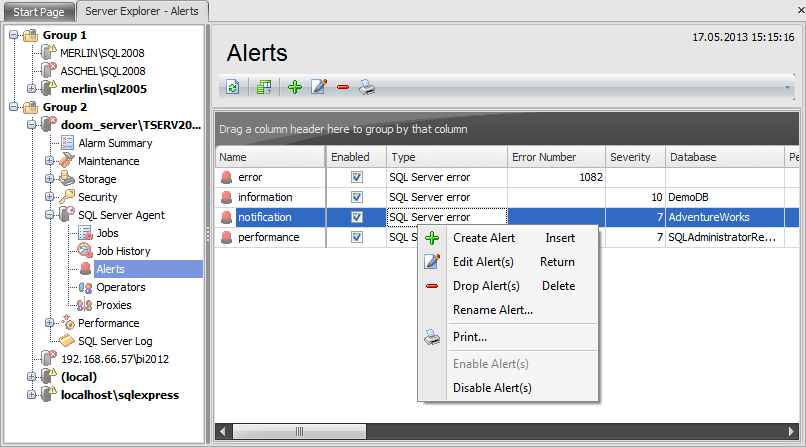Online Documentation for SQL Administrator for SQL Server
Alerts
An alert is an automated response to one or more events. You can define an alert to specify how SQL Server Agent should respond to their occurrence. An alert can respond to an event by notifying an administrator or running a job, or both. An alert can also forward an event to the Microsoft Windows application log on a different computer. By defining alerts, database administrators can monitor and manage SQL Server more effectively.
Note: Before using SQL Server alerts, make sure that the SQL Server Agent service is running.
Use the object context menu or toolbar buttons to:
![]() create a new alert
create a new alert
![]() edit selected alert(s)
edit selected alert(s)
![]() drop selected alert(s)
drop selected alert(s)
![]() create and print the report
create and print the report
- rename alert
- enable alert(s)
- disable alert(s)

The list displays all created alerts as a grid with the following columns:Name, Enabled, Type, Error Number, Severity, Database, Performance Object, Performance Counter, Performance Instance, Performance Condition, WMI Namespace, WMI Query, Run Job, Has E-mail Notification, Has Net Send Notification, Last Occurrence Date, Last Response Date. If more convenient, you can change the order of the columns by dragging their headers horizontally. See the Working with grid section of the SQL Administrator documentation to find out operations that can be performed with the grid.
To open an alert in Alert Editor, double-click it in the list of alerts. Alternatively, you can right-click the alert alias and select the Edit Alert context menu item.
See also:



































































